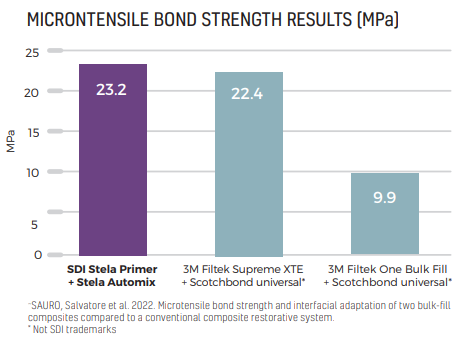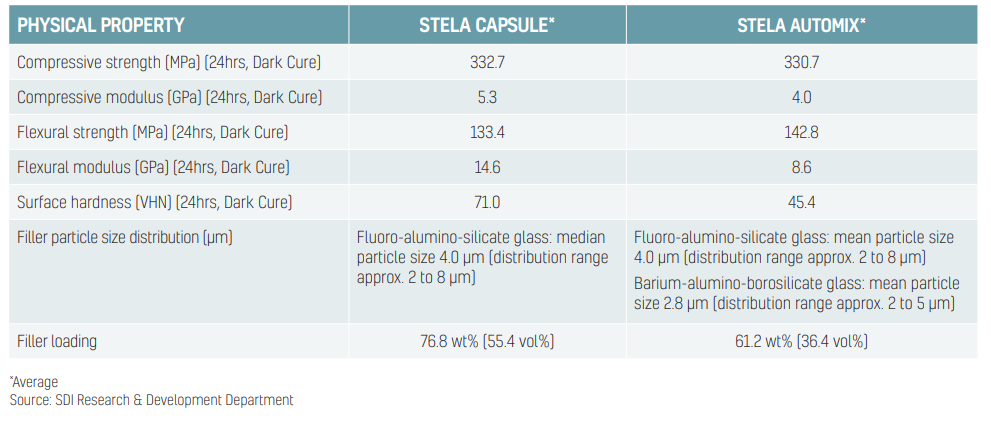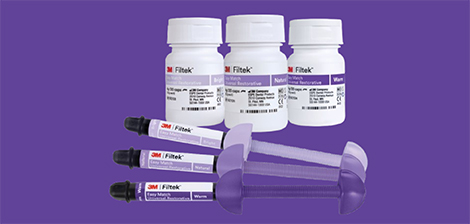Amalgam has a new competitor, as SDI announces the release of their new Amalgam alternative, Stela. Amalgam has, in its various forms, been used across the globe for about 150 years. Reliable and proven, amalgam fillings have long remained one of the dominant treatments within dentistry. However, dental industry innovators, SDI have taken aim at this established practice in dentistry and created something new. Strong, efficient, easy-to-use, and versatile, Stela.
Stela is a high-performance self-cure composite, which SDI has created from the ground up to outperform and replace amalgam. We’ll be looking into what makes Stela so special, and how well we think it compares to amalgam offerings.
We’ve been writing a lot of quality content for dental professionals recently. Whether you’re looking to learn about Endo Motors and which motor we think you should choose in 2024, or you want to learn more about flowable composites and some extra tips for success with said composites, we’ve got articles covering all of these subjects. We’ve also recently written about our engineering services for handpieces and small equipment, as well as our reactive maintenance response teams, both are very much worth checking out, and might help you to save some precious practice budget!
Does SDI Stela truly measure up as an amalgam alternative?
‘Amalgam alternative’ is quite the claim, but one we believe Stela can stand up to. While the dental industry has seen no shortage of other products which have tried to step into amalgam’s shoes, Glass Ionomer cement, ceramic inlays to name a few, all have failed to match Amalgam’s general popularity. However, SDI Stela has some distinct advantages which could help to propel it to a space in the industry.
Snap-set strength.
The Stela has been formulated to reach a high level of strength within a very short time, preventing premature failures, re-work from patient returns and ensuring dentists can move immediately onto the finishing and polishing stages after extrusion. Reducing the number of visits your patient needs and the amount of chair time each restoration requires. Additionally, Stela reaches 90% of its strength after one hour, the same amount of time it takes amalgam to reach 37% of its maximum strength, protecting patients in that crucial first 24-hour period.
One-shade aesthetics.
Stela is available in a universal shade which blends to the colour of its surrounding tooth using a ‘chameleon effect’. This makes managing your inventory much easier, as well as removes a potential point of error when it comes to shade matching.
Mercury-free makeup.
Stela, unlike amalgam, is entirely mercury-free, which may make it a popular choice for patients and practitioners.
Unlimited depth of cure.
Like amalgam, Stela offers an unlimited depth of cure, but unlike amalgam, Stela doesn’t compromise on aesthetics. This means that you can offer a robust and esthetic option to patients in need of restoration.
Specifics – What is Stela?
Made in collaboration between SDI, and the University of New South Wales, the University of Sydney, and the University of Wollongong, the Stela range can be reduced to two categories, Stela Primer, and Stela Composite. Stela Primer is designed to be used alongside a Stela Composite, which may be either a Stela Capsule or Stela Automix syringe.
Stela Primer is a self-etch priming material designed for use alongside a Stela Composite. One of the benefits of Stela primer is that it cuts down on etching and priming steps in the restoring process, easily being completed in two stages which take about 15 seconds. The thought process behind this isn’t just for convenience and efficiency’s sake - though that is a bonus - but rather, to cut down on potential points of technique sensitivity. With two easy steps, the chances for contamination and error are greatly reduced. This process means that dentists can cut down on their in-chair time and follow a process with less points of potential failure.
“Both Stela Primer and Stela composite have the MDP monomer, ensuring a strong chemical bond, free of gaps, with better sealing for durability and no sensitivity. Stela is also BPA and HEMA free. Stela Primer tags into the dentinal tubules, forming micromechanical retentions (secondary bond). Stela Primer then chemically bonds to Stela paste (primary bond), forming a true adhesion between atoms or molecules of Primer and composite.” - SDI Official

Stela Capsule & Stela Automix Syringe
After using Stela Primer, you have a choice between the Stela Capsule and the Stela Automix Syringe. Both products contain a very similar radiopaque self-cure composite system, the main difference between the two is their handling. In challenging situations, the Stela Automix Syringe has a bendable, rotatable metallic tip which can give easier and precise access. Additionally, while both composites may be similar, the Stela Capsule does have a different makeup to the Stela Automix Syringe and may provide different results. Please see the table below for precise details regarding their differences.

How to use SDI Stela
Prepare, clean, Isolate the cavity
Perform this as you would any other restoration as-standard.
Put 1-2 drops of SDI Stela Primer into a mixing well
If you’re looking for mixing wells, our UnoDent range has some excellent examples.
Apply Stela Primer to all cavity surfaces and margins and leave for 5 seconds
This should be done using a disposable applicator brush. SDI recommend that you use their product, SDI Points. If you’re looking for an alternative, consider UnoDent Micro applicator brushes.
Blow gently with air for 2-3 seconds, no need for light curing!
Stela does not need to be light cured, simply ensure the areas covered by stela primer are gently blown with air.
Activate Stela capsule by pressing button, then mix for 10 seconds.
If you’re using a Stela Automix Syringe this step can be disregarded. Please also note that some residual inert powder on its first applicator click. Again, is inert, safe and will not affect clinical performance.
Place capsule into SDI applicator and click until paste is visible through clear nozzle
Again, this step can be disregarded if you are using an Automix Syringe.
Extrude in a single step, lightly overfill cavity and margins.
You’re looking to overfill so that you ensure good contact with the Stela Primer you applied at the margins.
If necessary, sculpt gently, do not remove material from margins until it has set
Stela sets 4 minutes after extrusion (or capsule mixing), and has a working time of 1 minute, 30 seconds so you won’t have long to wait! This is a much faster cure than many of Stela’s competitors, and increases treatment efficiency, especially when treating multiple cavities at once.
Wait 4 minutes for polymerisation, then finish and polish as standard
Wipe inhibition layer and finish with burs and water spray. Additionally, SDI recommends that you can polish with a Polishing Paste.



